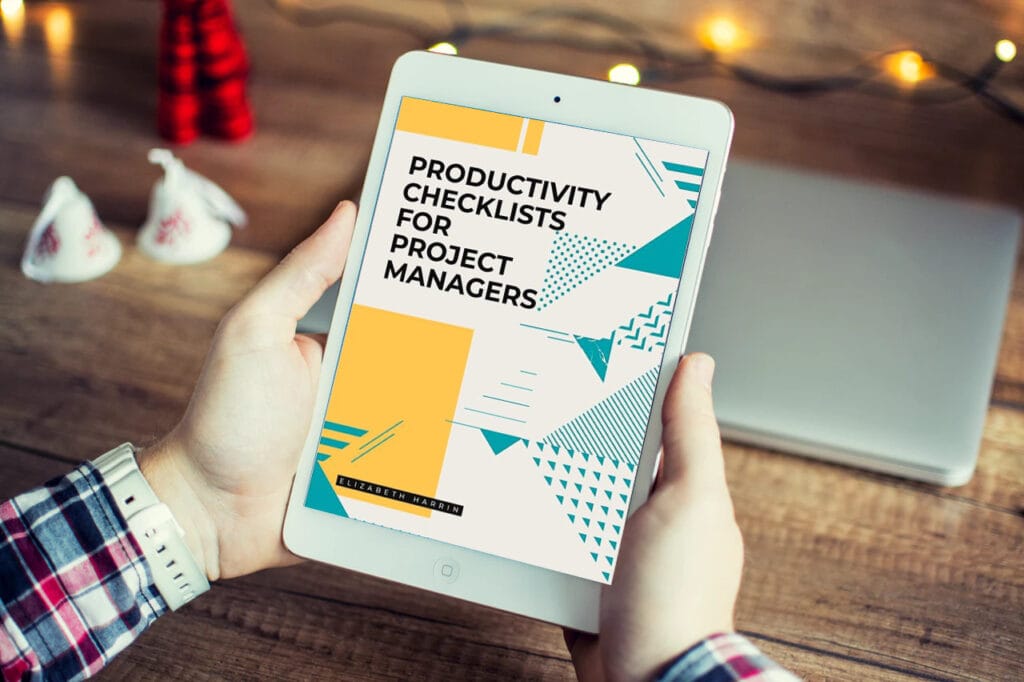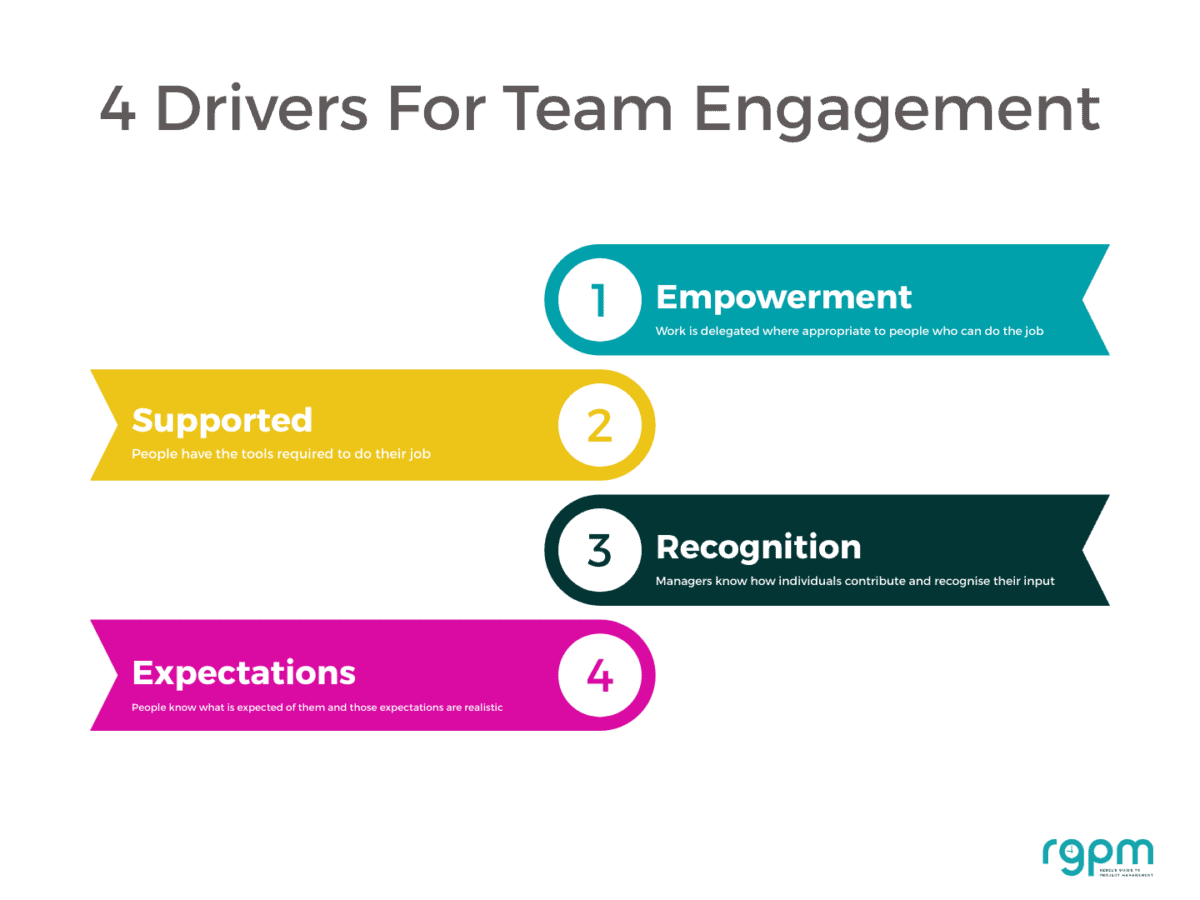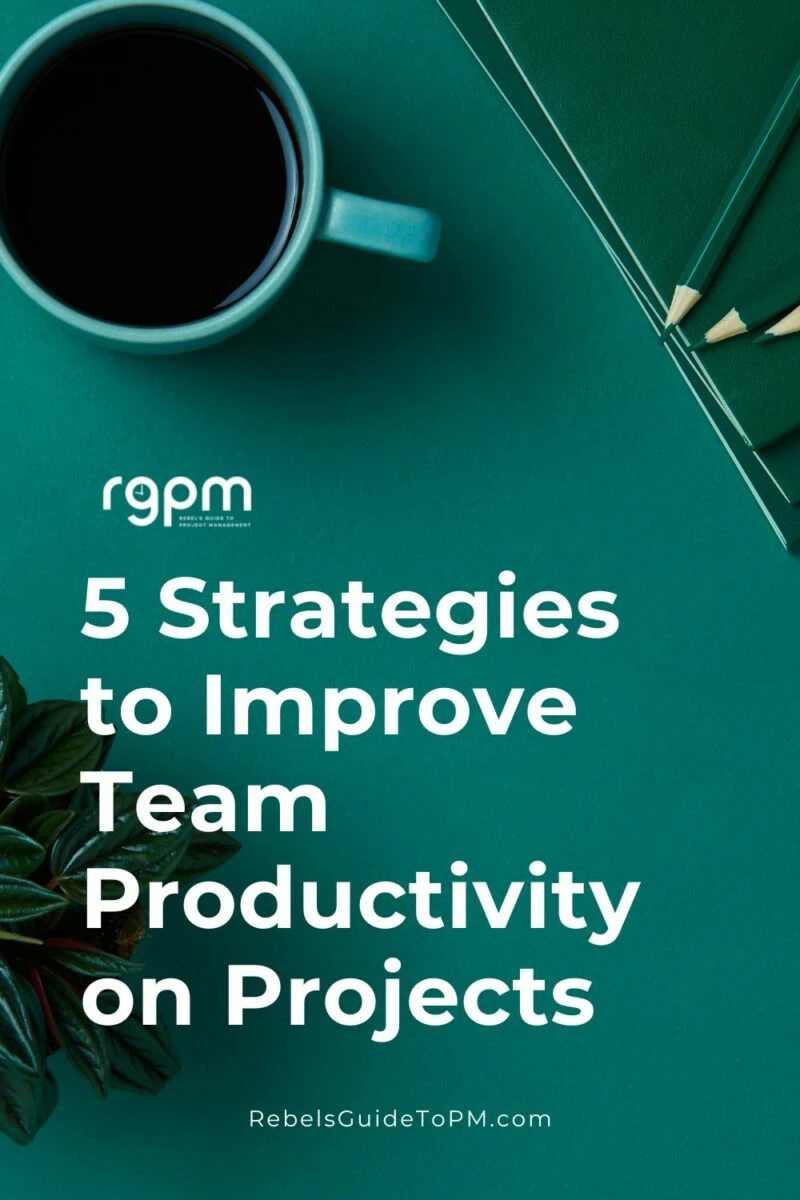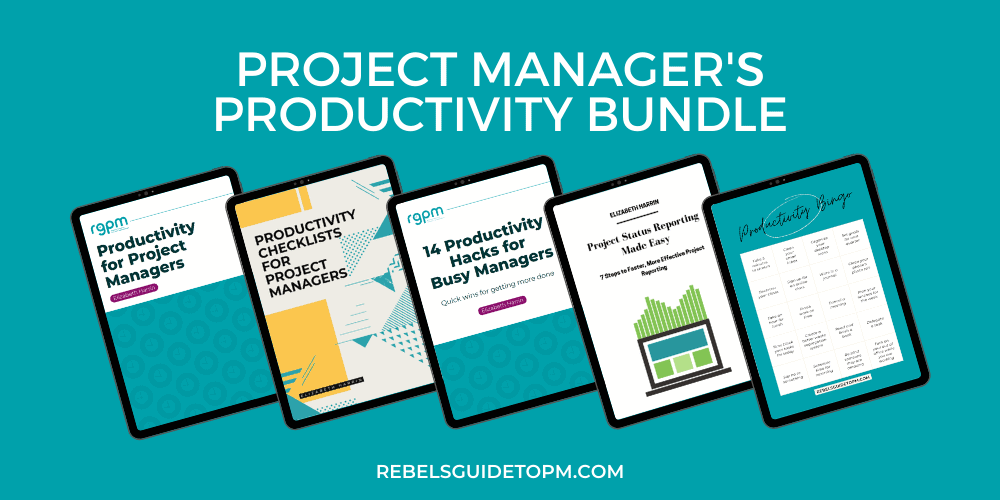5 Strategies to Improve Team Productivity on Projects
This blog is reader-supported. When you purchase something through an affiliate link on this site, I may earn some coffee money. Thanks! Learn more.
Wouldn’t life be better if your team were, well, just a little bit more productive?
If there was less chat and more doing?
It is possible to create an environment where project team members can be more productive, by creating good habits.
You’ve read all the articles, you’ve got ideas about how things could be better. But no one is telling you HOW to get your team to adopt new ways of working. Sharing round a link to one more ’10 ways to be more productive’ article just isn’t making change happen.
Don’t worry, there are things you can do to enhance productivity… I’ve tried and tested these ideas and they really work!
What is team productivity?
First, let’s look at what we mean when we’re thinking about how to increase team productivity.
Team productivity is a measure of how much work the team can do, and still get a quality result.
If you work in the North Pole, like Buddy the Elf, you can measure productivity easily, by the number of Etch-a-Sketches produced in a day.
But in knowledge work environments, we rarely measure team productivity. There isn’t an amount of widgets to be counted to see visually how productive we’ve been that day.
If you work in an
If you don’t use those charts or that terminology, productivity becomes a measure of how the team feels, and how you, as the team leader, feel about their output.
What do you need to be productive?
Productive people have the tools they need to do the job. They don’t waste time looking for stuff or trying to work out how to get things done because there are systems, tools and processes that support them.
A productive team environment is one where people are encouraged to do their best work. It’s part of a positive team culture.
Work is done efficiently. And generally, productive, efficient team members are happier. Win!

How to boost project productivity
HBR reports some very obvious ideas for how to make your team more productive like:
- Clarifying expectations
- Setting a good example
- Making meetings shorter.
In a project team, you’ve probably already done those or considered the basics. So we’re looking for next level strategies to get more productive.
Whole books have been written about how to improve productivity. (There are some of my favorite recommended reads here.)
Project productivity looks different in different settings, so here are some ideas to improve team performance that you could encourage as new productivity habits.
- Provide more autonomy to remove bottlenecks.
- Delegate authority to the lowest possible level so decision making happens closer to the action.
- Don’t just make meetings shorter, cancel them. Cancel one meeting a week and see what suffers. Probably nothing. In fact, rethink meetings totally.
- Encourage small talk and trust and relationship building activities like having lunch together because that makes communication easier.
- Do the hard stuff and manage out people who are underperforming.
- Play to people’s strengths so work is appropriately allocated.
However, you’ll have to use your judgement about what you want to see.

But how do we get people to actually be more productive?
I’d love to say the answer is to introduce a team productivity tool (especially as I literally wrote the book on collaboration tools for project managers).
But it isn’t that simple.
The rest of this article talks about how to get people to work in the new productive way.
And the secret weapon is… habits.
Habits are the key to productivity
Everyone has different ways they like to work. I love lists, and I work with people who are visual thinkers. I’m a morning person, but the rest of my family (at least, those over the age of 7) would rather have a lie in.
But regardless of your work style, if you can help your team members develop great productivity habits, you can develop your team and get more output in a day.
With the right habits, your team can work together with less effort. Collaboration is easier. You see:
- less procrastination
- fewer unproductive meetings
- less general moaning!
But first, we have to create a new habit, and that’s tough.
Why people are reluctant to do things differently
Have you tried to do something different and create a new habit, whether that’s give up smoking, go to the gym every lunchtime or call your mother each weekend?
It’s hard.
Our brains are wired to do something one way, and asking it to do a task differently takes some serious rewiring. It can be done, but you’ve got to work at it.
Research shows it can take a while for a new habits to form. And we aren’t talking a couple of days. Lally et al found that it can take anything from 18 to 254 days for a new habit to be fully embedded in ‘the way we do things round here’.
I don’t know any project sponsor who is going to be prepared to wait 254 days for people to be more productive.
What we need to do is make it easy for people to adopt new ways of working, and make those ways of working worthwhile. Preferably with a near-instant payoff in efficiency so people want to continue doing the new thing.
How to introduce new habits
Let’s look at some practical strategies for bringing new habits into your team’s culture. And we want to make those habits sustainable.
1. Lead by example
I know I was dismissive of the basic advice from the HBR article above, but leading by example is a basic that it’s important to get right.
Be the change you want to see. If you want people to use a new collaboration tool, use it yourself. If you want people to feel it’s OK to leave the office on time, leave the office on time.
You communicate the habit you expect by literally showing people what is acceptable.
“I think leadership comes from integrity – that you do whatever you ask others to do. I think there are nonobvious ways to lead. Just by providing a good example makes it possible for other people to see better ways to do things.”
Scott Berkun
2. Use peer pressure
People are influenced by the people around them.
Look at who is already working the same way you want the rest of the team to. Use
Empower your inner circle of productive people to share their ideas, and publicly support them to do so.

3. Make changes slowly
Let’s say you want to introduce a new thing. I’ve rolled out new project management software to teams before, or even made smaller changes like now we have a team holiday calendar so we can see when colleagues are going to be away from the office.
When you want to make a change, you’ve got two choices:
Rollout horizontally: share the whole expectation with one group, and then roll out slowly to the rest of the team as you can prove it is working.
Rollout vertically: break up your expectation into smaller chunks. Roll out the first small chunk to the team, then the next, then the next.
Successful people are simply those with successful habits.
Brian Tracy
4. Reward the change you want to see
Make it a game. Make it fun. Reward people who can evidence (or who feel) more productive. Be proud of yourselves. Thank people for trying, even if they are finding it hard.
Use your imagination and look at ways you can reward people for using their new habits.
Listen for feedback, answer questions, and build in changes to the system so people can see they are also rewarded for contributing to further improvements.

5. Don’t fix what isn’t broken
If an old habit in the team is useful, don’t break it.
Keep what works. Blend it with what you are currently trying to improve through new habits. If people can see that the new way of working fits effortlessly into their existing processes, that’s another barrier to change busted.
Things are easier when they feel familiar.

Your goal is to create a project culture and environment where people can do their best work together (and individually).
Normally, people know what that kind of environment would look like. Listen to what they are trying to tell you about the tools, systems, processes, communication channels, even something as simple as where the photocopier is (yes, we changed that in one team and life was GOOD).
Sometimes small tweaks are all that you need to drastically improve project productivity, and make your workplace a happier place.
What difference can you make to team productivity? Wondering where to start? Why not ask your team how they see it and what they would like to be different.
